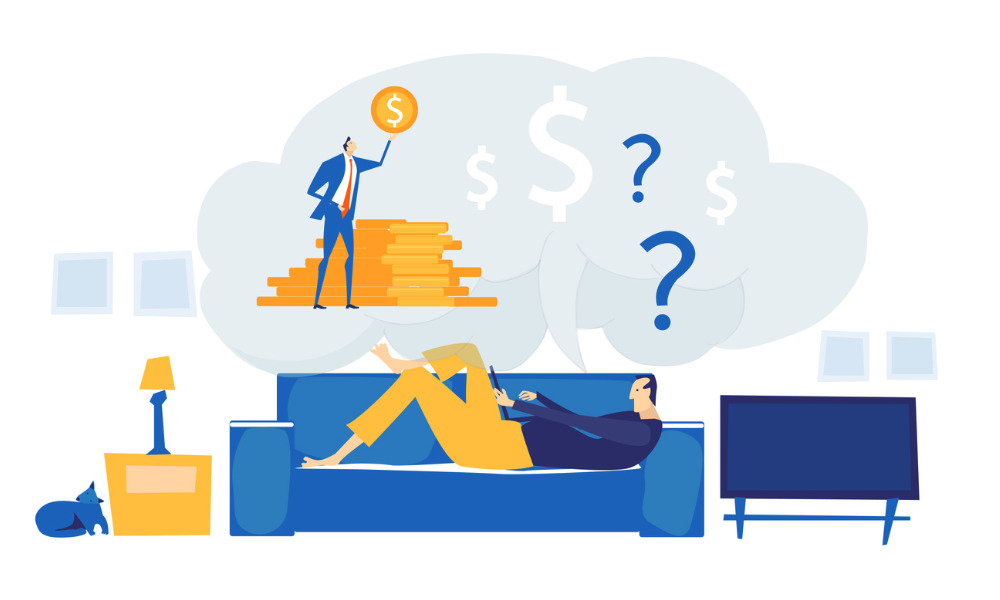Tax expert addresses the one thing clients and advisors had in common in 2020 – working remotely

Back in lockdown again and with the prospect of getting back to the office looking some way off, work-from-home tax relief is top of mind once again.
WP has teamed up with H&R Block to address some of the main subsidies in a bid to offer some clarity and reference before 2020 tax-return deadlines.
In part one, Lisa Gittens, senior tax professional, addressed the Canada Emergency Wage Subsidy, or CEWS, as it’s better known, and EI refunds. In part two, she tackled the Canadian Emergency Business Account (CEBA) loan, and in this final piece, she will look at remote working and rent relief.
For employees working from home, the forms most relevant are the T2200 and the T777S, which are available directly on the CRA website or through an employer’s business account. Importantly, these can be submitted via email and electronic signatures are allowed, meaning you don’t have to meet the employer face to face.
The new T777S is for an employee who has been forced to work from home. It asks whether you have been working from home at least 50% of the time and whether you had to do this because of COVID-19.
The first option is to claim a temporary flat rate. You are allowed to claim $2 a day for up to 200 days, a capped timeframe because the lockdown started in March. The form requires you to say how many days you worked from home. For example, if you are eligible for the full $400, you claim that on your tax return as a deduction.
Gittens said: “If I earned $10,000, my deduction is $400. That means I'm paying tax on $9,600. That's my net income, my taxable income. And that's it, no receipts, there is nothing else I need to fill out. I don't need anything from my employer; I just submit the T777S.”
If, however, you have expenses you want to claim, there is a “detailed method”, which requires you to keep receipts and your employer to complete a T2200F form. Under option two, eligible expenses include things like paying rent for the house or apartment where you live, and utilities like electricity, water, heat, and home access fees.
These three main categories - utilities, rent, and home access fees – are based on an allocation of home square footage.
Gittens explained: “You have to calculate how much square footage is being used for that home office. If my home is 1,000 square feet and I'm using 100 square feet, that gives me a 10% claim for the total rent, the total utilities and the home internet access fees.
“The square footage calculation has always been the way that we calculated home office expenses. That has not changed. What is new is that you can add in the home internet access fees as part of that 10%.”
On the employer side, they must fill out the T2200F, signing off on the expenses claims. Using this method, an employee can also claim supplies like stationery, postage, toner, paper, hand sanitizer, and cleaning supplies.
Gittens said CRA has really simplified these forms and added: “The key to whether you're claiming this work-from-home expense, whether you're a business owner, or an employee, is where you are doing your nine to five duties. If it's from your home, then this deduction applies to you.
“I want to also remind our self-employed tax filers who were running a business from home prior to COVID that they are still reporting their self-employed income on the T2125, which is their statement of business or professional activities. On that form, they are going to be able to claim their expenses, including vehicle expenses, and continue to claim any capital costs on their equipment.”
What is CERS?
The Canada Emergency Rent Subsidy is defined by the CRA as … Canadian businesses, non-profit organizations, or charities who have seen a drop in revenue due to the COVID-19 pandemic may be eligible for a subsidy to cover part of their commercial rent or property expenses, starting on September 27, 2020, until June 2021. This subsidy will provide payments directly to qualifying renters and property owners, without requiring the participation of landlords.
Gittens said this subsidy is relatively simple and is paid direct to the tenants not landlords. If you are a business owner and are paying rent, you can apply for the rent subsidy, which was being paid from October to December of 2020.
She said: “It’s taxable income, so they have to report it on their business return as a government subsidy and then they're going to show it as an expense; the actual rent they paid to their landlord.”
She added: “To me, this is really one of the most straightforward ones because you’re showing the subsidy as income. If I got $10,000, my rent was $10,000, that’s my expense and it does not increase my tax liability in any way.”



